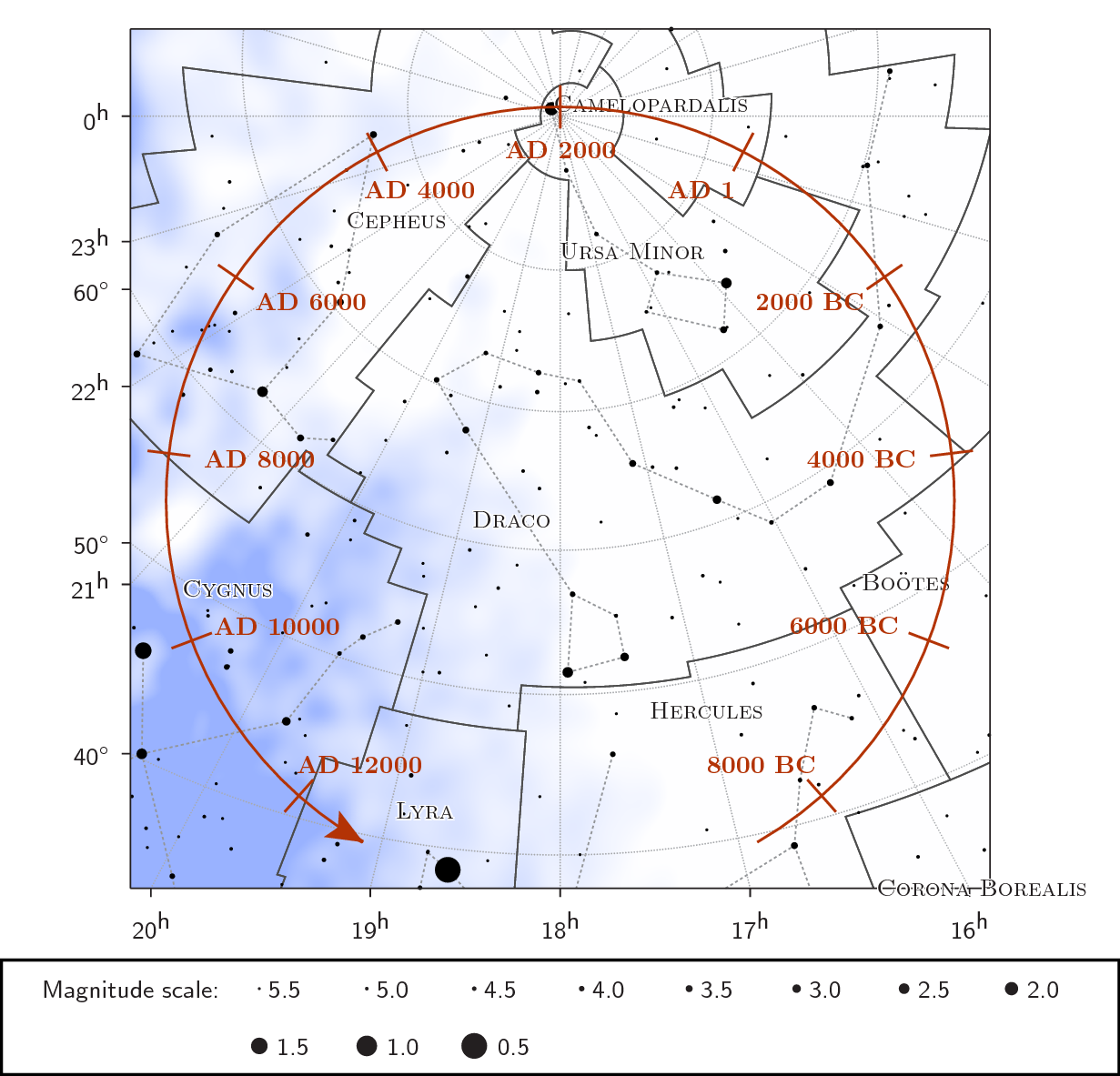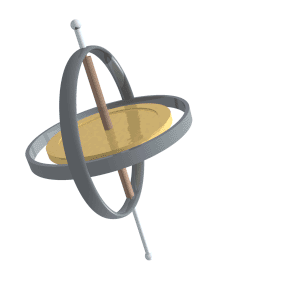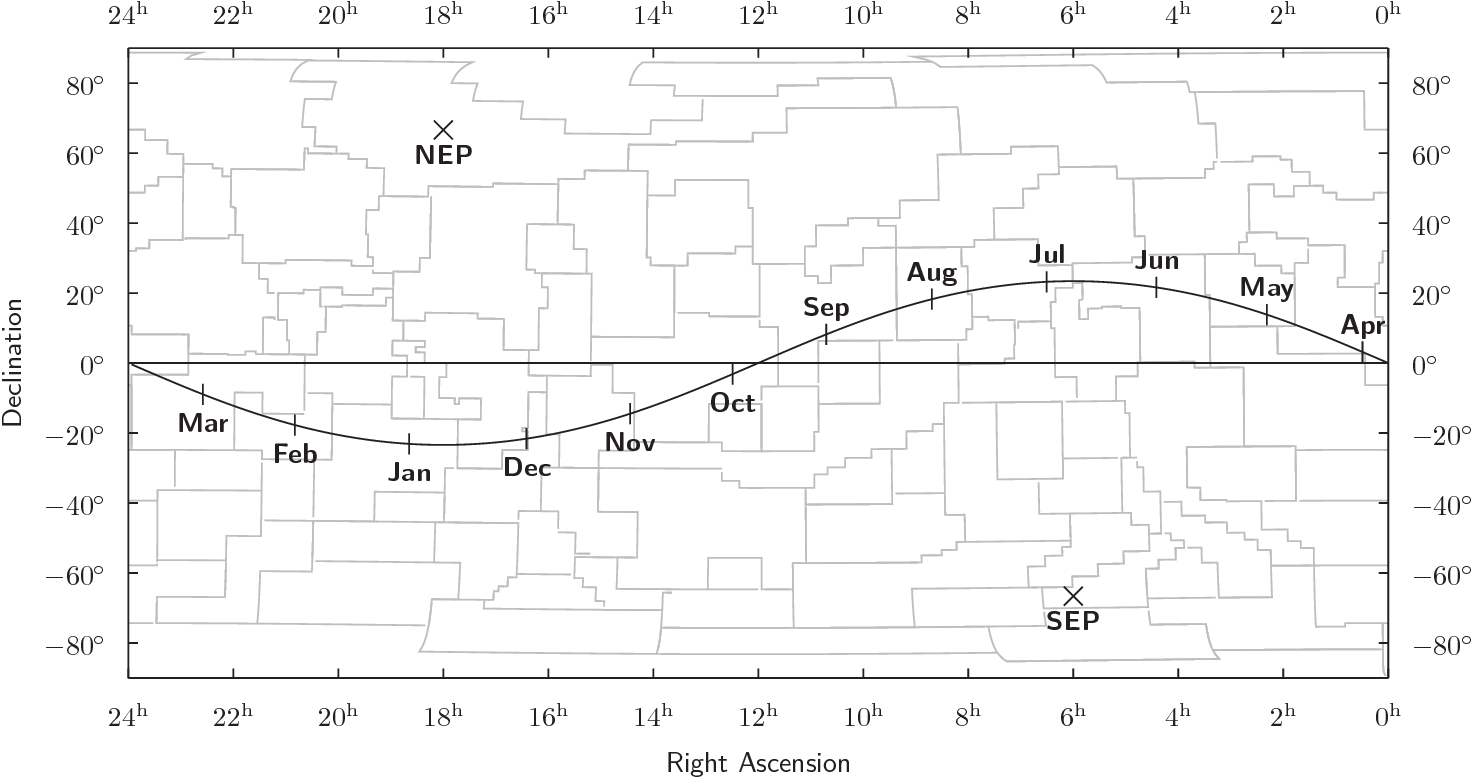Precession Of The Equinoxes
The precession of the equinoxes is a gradual changing in the direction of the Earth's rotation axis, which causes the position of the celestial poles to drift through the constellations at a continuous rate of roughly 20 arcseconds per year. Although this effect is small on short timescales, the accumulated drift adds up to about one Moon diameter per century.
The effect does not change the shapes of the constellations, or the geographic position of the north and south poles on Earth, but it does change the direction in space where the Earth's rotation axis points, causing the night sky to appear to turn around a different point among the stars.
Currently the Earth's north celestial pole points close to the star Polaris, and the precession of the equinoxes is moving the pole closer to the pole star. They will make closest approach in around 2100, and then begin moving apart again. By 2500, Polaris will be several degrees away from the true celestial pole.
Mechanism
As the Earth rotates, it behaves rather like a gyroscope. When a gyroscope spins in the Earth's gravitational field, its rotation axis slowly turns due to an effect called precession. Likewise, the Earth is subjected to the Sun's gravitational field as it rotates, and this causes its rotation axis to precess.
The direction of the Earth's north celestial pole turns in circles around the north ecliptic pole, which is the direction perpendicular to the Earth's orbit around the Sun. On the night sky, the ecliptic pole is the point perpendicular to the line of the ecliptic, which the Sun follows in its annual passage through the zodiacal constellations.
Each revolution takes around 25,772 years, although the exact rate changes slightly over time due to effects such as nutation.
Visualising the precession of the equinoxes
It is possible to visual the changing celestial coordinates of stars using a device similar to a planisphere. A conventional planisphere shows how the sky turning around the celestial poles changes the altitudes and azimuths of stars above your local horizon. By changing the configuration slightly, a planisphere can be built which shows how the turning of the celestial poles around the ecliptic poles changes the right ascension and declination of stars.
For more information, click here.


